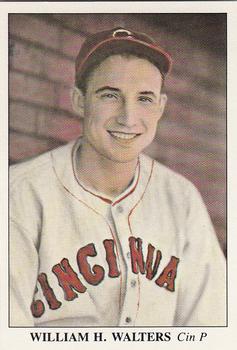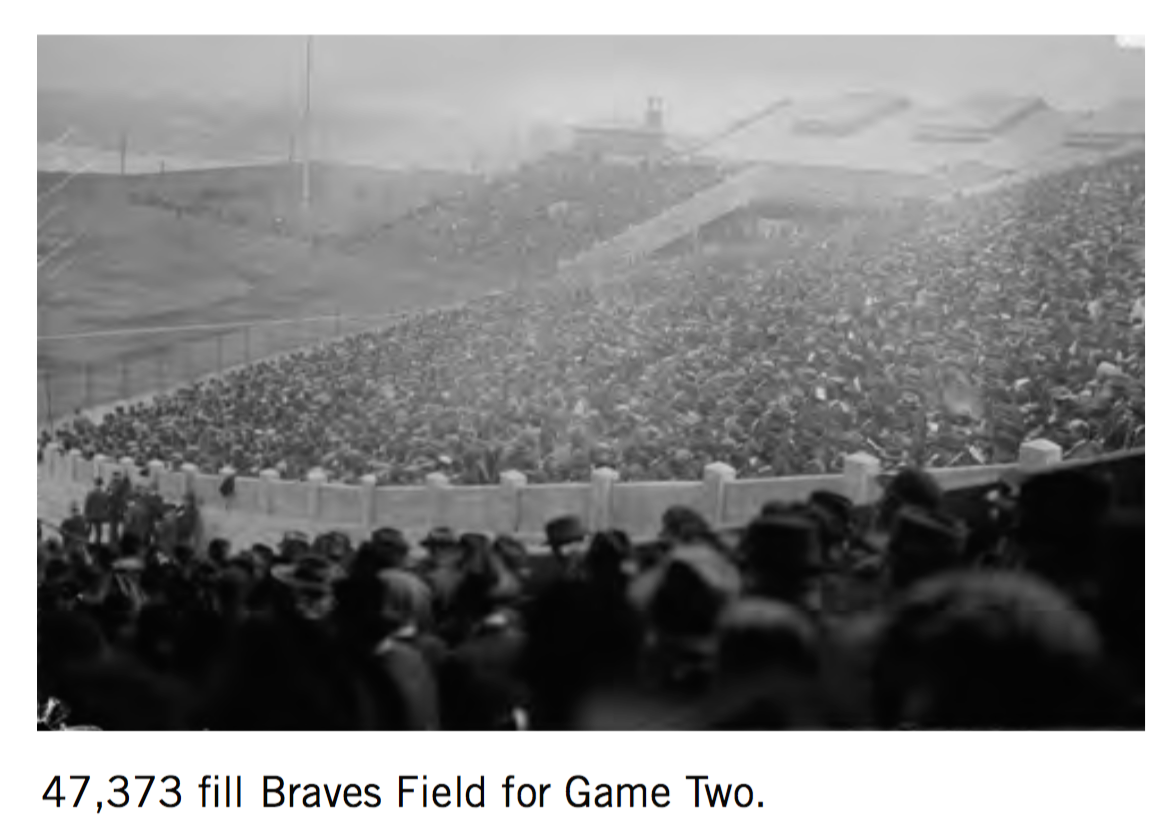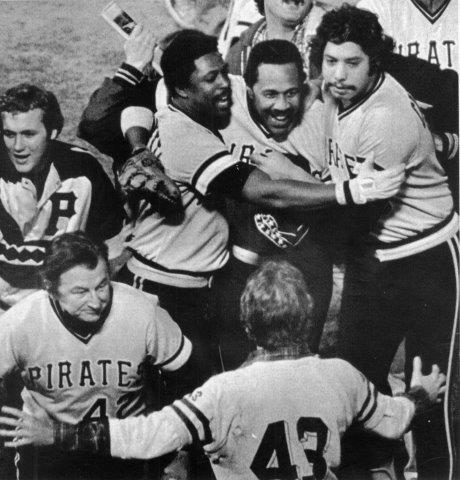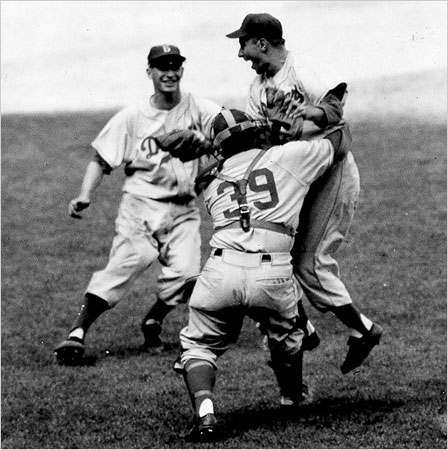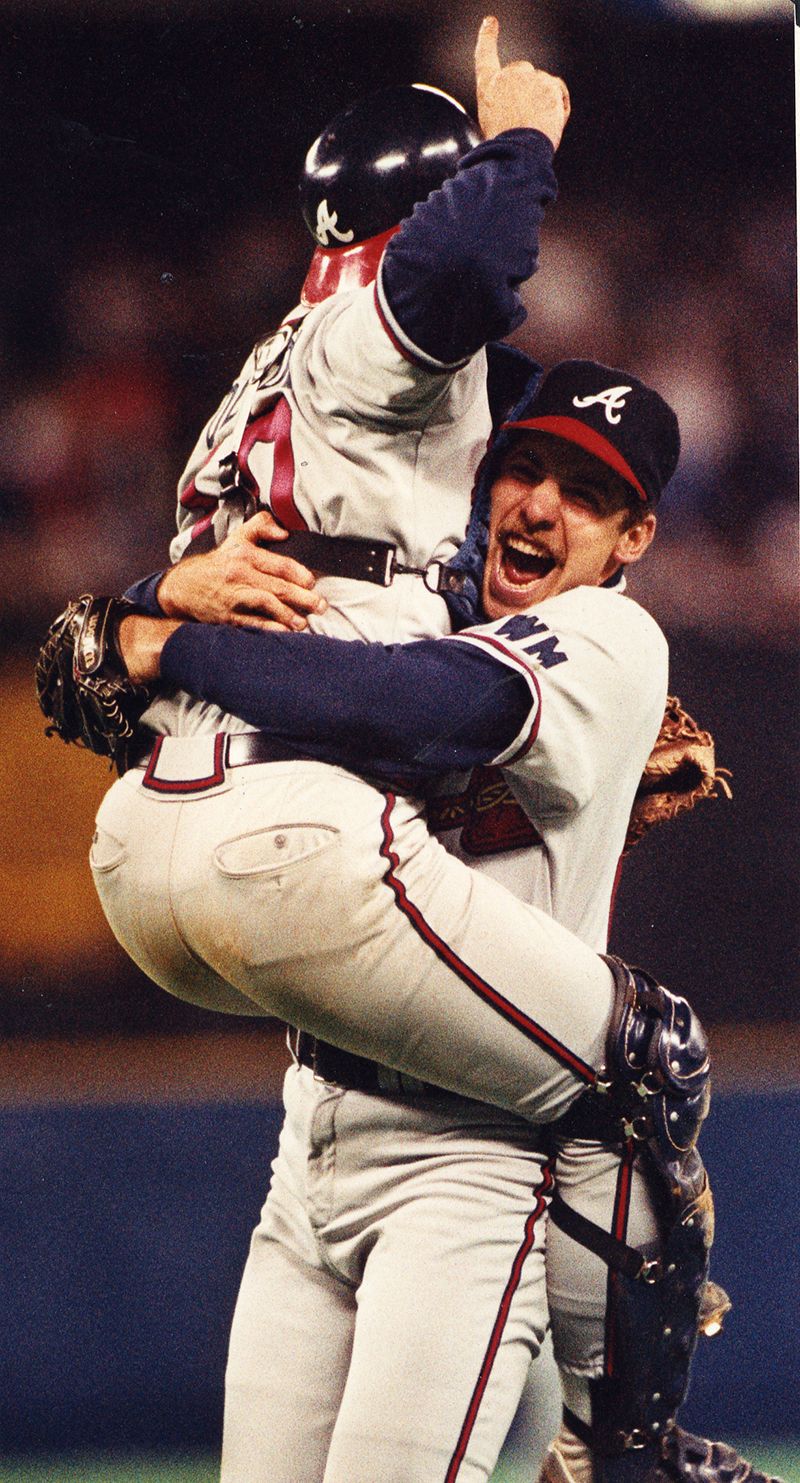October 8, 1939: Joe DiMaggio’s 10th-inning single secures Yankees’ fourth straight title
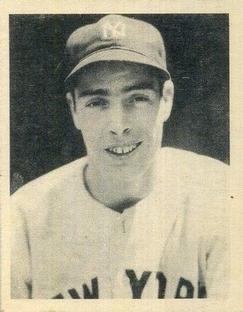 In a wild back-and-forth game, the Yankees won the 1939 World Series, the fourth straight title for the Bronx Bombers, with a 7-4 victory in 10 innings. Although gaining notoriety for a collision at the plate that stunned Cincinnati catcher Ernie Lombardi, the contest featured solid starting pitching and clutch rallies by both the triumphant New York team and the losing Reds, who ultimately collapsed with four errors, “three of them smacking of sandlot baseball,”1 in the final two innings.
In a wild back-and-forth game, the Yankees won the 1939 World Series, the fourth straight title for the Bronx Bombers, with a 7-4 victory in 10 innings. Although gaining notoriety for a collision at the plate that stunned Cincinnati catcher Ernie Lombardi, the contest featured solid starting pitching and clutch rallies by both the triumphant New York team and the losing Reds, who ultimately collapsed with four errors, “three of them smacking of sandlot baseball,”1 in the final two innings.
Cincinnati co-ace Paul Derringer, who started the All-Star Game and finished an impressive 1939 season with a 25-7 record, shot down the Yankee attack by retiring the first 14 New York batters. Yankees starter Oral Hildebrand, who had a career-best 3.06 ERA in his only full season in the Bronx after eight campaigns with the Indians and the Browns, also set down the Reds in order in the first. Frank McCormick “opened the Redleg second by smacking Hildebrand’s first pitch off the right center-field wall, back of the flag pole, for a double. It was the Reds’ first extra base blow of the Series.”2 Lombardi advanced McCormick to third with a deep fly to Joe DiMaggio in center, but Hildebrand, hardly a strikeout pitcher with only 50 whiffs in 1939, fanned Harry Craft and got Wally Berger to ground to Joe Gordon to keep the game scoreless through two frames.
In the bottom of the third, Derringer himself singled with one out, but Hildebrand again stranded the Cincinnati runner.
In the fifth inning, “Harry Craft, the Red center fielder who had been making a striking appearance in these games – six strikeouts – was withdrawn. … The announced explanation was that Harry had an upset stomach.”3 Al Simmons replaced Craft, whose “left side also was strained. … He played with it tightly bandaged with adhesive.”4 Simmons went to left field and Berger moved to center. Berger soon had a play after George Selkirk doubled for the first New York hit with two outs. “The ball missed being a homer by a few inches, as it struck the top of the low fence in front of the right field bleachers,” observed The Sporting News.5 Derringer induced Gordon to sky to Berger in deep center.
Meanwhile, Yankees were also having physical woes. Wrote The Sporting News, “Hildebrand “wasted a lifetime to get into a World’s Series, and when afforded the chance, turned up with an appendix attack.”6 Steve Sundra came on to replace Hildebrand for the bottom of the fifth. Having almost evenly split his season between the bullpen and the rotation, Sundra had proved a good-luck charm for the 1939 Yankees, having started 11-0 before losing to the Red Sox on September 30.7 Against the Reds, Sundra surrendered a two-out triple to Billy Myers, but got Derringer to foul out to catcher Bill Dickey.
As a batter, Sundra drew Derringer’s first free pass of the game in the top of the sixth, but the Yankees did not score until the seventh, when the New York bats echoed their Game Three thunder. Charlie Keller homered to start the frame, and one out later Dickey followed with another home run to give the Yankees a 2-0 lead.
The Reds had nine outs remaining in which to get at least a pair of runs. Cincinnati needed only two outs in the seventh to not only tie the game, but take a lead. McCormick began the rally with a grounder to third that Red Rolfe muffed for an error. Lombardi struck out, but Simmons doubled to put two runners in scoring position with one out. Berger’s groundout to Gordon got the Reds on the board. Cincinnati trailed 2-1 with two outs and Simmons on third base. Myers walked. Pinch-hitter Willard Hershberger batted for Derringer and tied the game with a single that scored Simmons and moved Myers to third. Billy Werber gave the Reds the lead with another single, which knocked Sundra out of the game in favor of Johnny Murphy, whose “19 saves in 1939 were the second highest total ever, trailing only Firpo Marberry’s 22 for the 1926 Washington Senators.”8 Murphy fanned Lonny Frey to end the inning with Cincinnati now up, 3-2.
The 1939 National League MVP with a 27-11 record, Bucky Walters, the other half of the dynamic pitching pair of the Reds, replaced Derringer and mowed down the Yankees 1-2-3 in the top of the eighth.
Cincinnati added an insurance run in the bottom of the frame. Ival Goodman doubled and advanced to third on McCormick’s sacrifice to the pitcher. Lombardi singled to send Goodman home and put the Reds ahead 4-2 heading into the ninth.
New York rallied immediately behind clutch offense followed by lackluster Cincinnati defense. The uprising started with singles by Keller and DiMaggio. Simmons, wrote the Boston Globe, “made a brainy play after fielding DiMaggio’s single. The series-hardened Al had thrown to second base allowing Keller to trot unmolested to third, but setting the stage for a double play by holding DiMag to a single base.”9
Dickey seemingly complied by grounding to Frey at second base. Frey “halted, stammered, and took a couple of steps toward the bag before tossing the ball to Myers. DiMaggio was still 10 feet away as Myers got it, but without Frey’s stalling, Myers could not only have made the force, but got the ball away to first before DiMaggio arrived.”10
Instead, Myers, pressured by DiMaggio’s proximity, fumbled the toss. Keller scored to bring the Yanks within a run, and New York had the tying run on second base with no one out. Selkirk moved DiMaggio to third with a fly to deep right. Gordon followed with “a scorcher to Werber, [and] Bill’s throw to the plate was too late to head off DiMaggio with the tying run.”11 Neither Babe Dahlgren nor Murphy could deliver Dickey, so the game went into the bottom of the ninth tied. The Bronx Bombers had come from two down with runs scoring on groundballs to second base and third base.
The Reds went down quietly in the ninth with a two-out Werber single producing the only baserunner.
Frankie Crosetti had gotten a key walk to start a Yankee rally in Game Three; he did the same thing in the tenth inning of Game Four. Rolfe advanced Crosetti with a sacrifice, thereby matching his total over 731 plate appearances in the 1939 regular season. Keller grounded to Myers, who made his second error in two innings to put runners on the corners with one out. Walters could have escaped the mess his teammates had made, but would have to do so against DiMaggio, who would have the signature at-bat of the 1939 World Series.
DiMaggio singled to right to score Crosetti and put New York in the lead. Goodman, reported the New York Times, “allowed the hit to roll away from him for one misplay and after frantic relays had finally returned the ball to the plate Ernie Lombardi dropped the throw that was meant to stop the second run. And then, while the lumbering Cincinnati catcher still squatted on the ground, apparently brooding over the futility of it all, DiMaggio, wonder player of baseball’s wonder team,”12 scampered home to join Crosetti and Keller in scoring. The Yankees suddenly had a 7-4 lead rather than a 5-4 edge. Walters set down Dickey and Selkirk to keep the deficit at three.
The last gasp of Cincinnati started with singles by Goodman and McCormick. Lombardi fouled to Dickey. Murphy then yielded line drives to Simmons and Berger, but Keller and Crosetti caught them to give New York its fourth straight championship. “The finish was unfortunate, as it left an unpleasant taste in the mouths of the loyal Cincinnati rooters,” The Sporting News commented. “But perhaps their team never had a chance. Like other clubs before them, the Reds went down before a club which many believe to be the greatest in all baseball history.”13
For seemingly sleeping on the job, Lombardi unfairly wore the goat horns, as his miscue looked the silliest but meant the least in terms of determining the outcome of the decisive game, an embarrassing sweep that perhaps spurred the Reds on toward a renewed chase for the ultimate baseball prize in 1940.
This article was published in “Cincinnati’s Crosley Field: A Gem in the Queen City” (SABR, 2018), edited by Gregory H. Wolf. To read more articles from this book at the SABR Games Project, click here.
Notes
1 Lou Smith, “Yankees Win Series in Four Games,” Cincinnati Enquirer, October 9, 1939.
2 Lou Smith, “Each Yank Takes Down $5,614, and Each Red $4,282,” Cincinnati Enquirer, October 9, 1939.
3 John Kieran, “Straight as a String,” New York Times, October 9, 1939.
4 “Gossip of Fourth Game,” The Sporting News, October 12, 1939: 11.
5 “Reds Crack Up in Fourth Game,” The Sporting News, October 12, 1939: 7.
6 “‘If We Can Improve Yanks, We’ll Do It,’” The Sporting News, October 12, 1939: 1.
7 David E. Skelton, “Steve Sundra,” SABR BioProject, sabr.org/bioproj/person/3c2f6fad (accessed December 27, 2016).
8 John Vorperian, “Johnny Murphy,” SABR BioProject, sabr.org/bioproj/person/f236db6a (accessed January 5, 2017).
9 Gerry Moore, “Yanks Win Fourth in Row, 7-4,” Boston Globe, October 9, 1939: 6.
10 John Lardner, “$150,000 Error Made by Myers Was Half Frey’s,” Boston Globe, October 9, 1939: 6.
11 Lee Allen, The Cincinnati Reds (Kent, Ohio: Kent State University Press, 2006), 274. The Associated Press reported that “Lombardi dropped Werber’s low throw.” Sid Feder, “National Loop Champions Fall Apart Like 1900 Jalopy,” Cincinnati Enquirer, October 9, 1939.
12 John Drebinger, “Yankees Beat Reds by 7-4 in the Tenth to Win Series, 4-0,” New York Times, October 9, 1939.
13 Frederick G. Lieb, “Precedent-Smashing Yanks Hailed as Team of Century,” The Sporting News, October 12, 1939: 3.
Additional Stats
New York Yankees 7
Cincinnati Reds 4
Game 4, WS
Crosley Field
Cincinnati, OH
Box Score + PBP:
Corrections? Additions?
If you can help us improve this game story, contact us.


